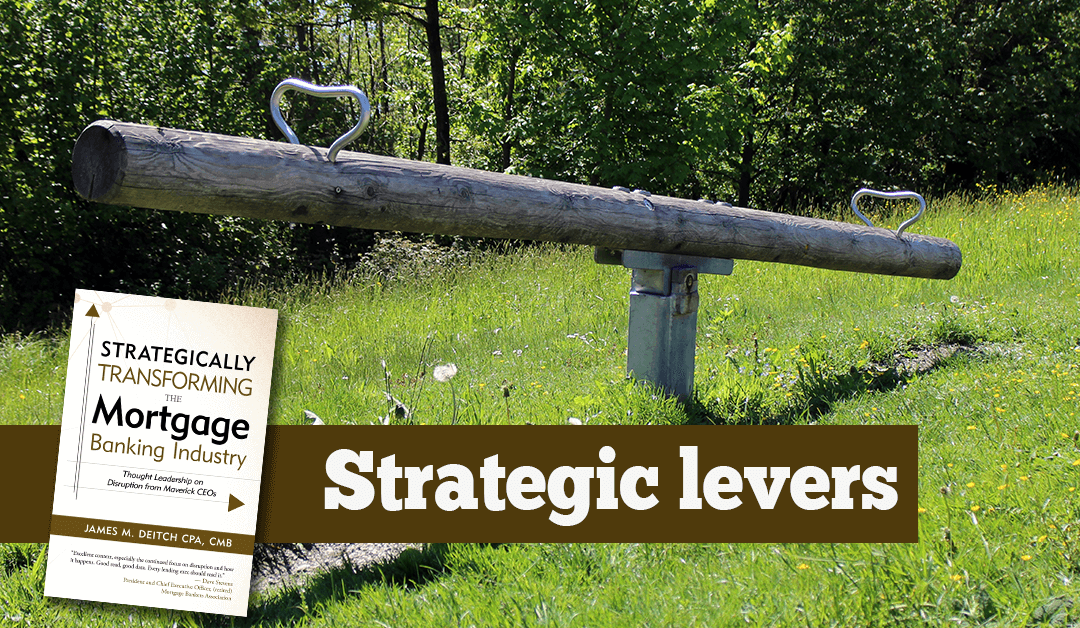Here is a preview from my new book that will be release later this month.
What are we talking about when we cite ‘strategy?’ One definition of strategy is, “a plan of action designed to achieve an overall aim.”
This book defines strategy as the following:
A plan of action to achieve three simultaneous goals: superior profitability, outstanding customer satisfaction, and defect-free loans.
What strategy is not: cutting margins, layoffs, adding volume for volume’s sake etc. Those are tactical decisions, not strategy. The aim of strategy is to achieve the objectives of superior profitability, outstanding customer satisfaction, and defect-free loans. These three objectives can be achieved in a variety of ways through what I identify as strategic levers.
There are six broad strategic levers to achieve a lender’s goals;
1. A lender can expand to achieve economies of scale. This strategy seems very common. Grow the volume that runs through an originator and ‘all will be well’. Expansion for economies of scale can include hiring sales personnel, Loan Officers, Account Executives, and adding geography to serve. Economies of Scale strategy includes mergers and acquisitions. Economies of scale do not include outsourcing; outsourcing is a process transformative strategy lever.
2. A lender can adjust its channels of distribution. This includes adding channels such as direct-to-consumer, traditional retail, wholesale, correspondent, bulk purchase, and realtor or builder joint ventures.
3. A lender can become technologically and process transformative. This includes execution excellence, process automation, robotics, big data and additional technology for augmenting core applications such as LOS, etc.
4. A lender can exploit product niche or niches. Product niches can include non-QM, rehab, construction-to-perm, fix and flip, investment property, alternate income qualification methods, etc.
5. A lender can diversify beyond consumer mortgage banking. This includes consumer lending, home equity lines of credit, insurance, commercial real estate lending, wealth management, Etc.
6. A lender can increase the level of relationship and empathy when interacting with prospects, customers, and employees. It’s forming a long-term relationship beyond a single mortgage transaction or series of transactions.



